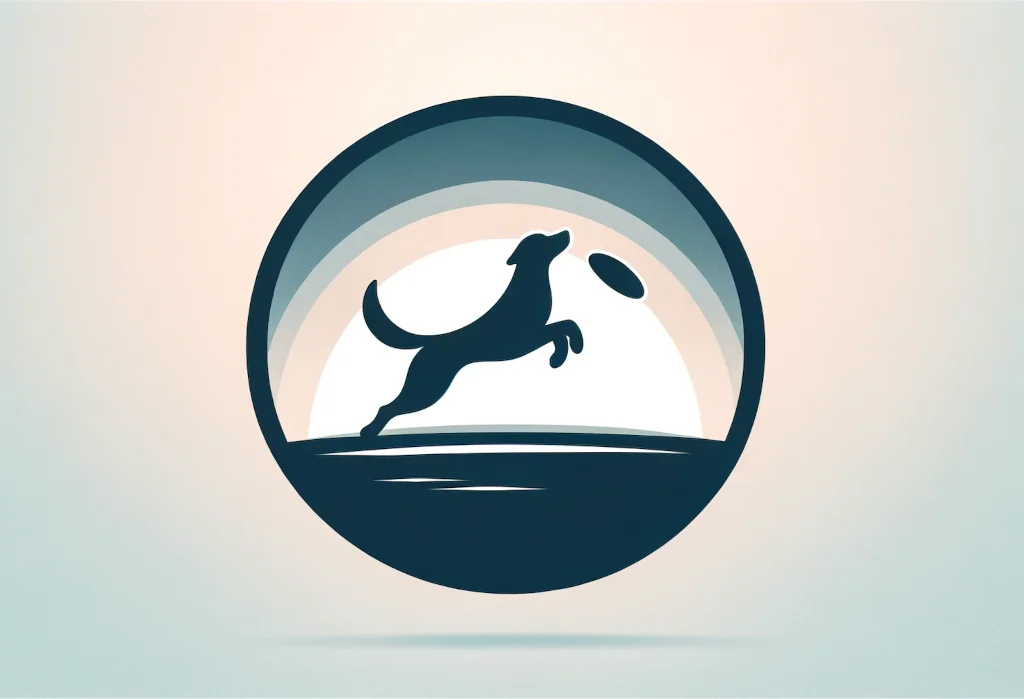Toying with the idea of another game of fetch with Fido? You’re not alone in thinking this might just be the millionth throw. But hey, your arm is getting a workout, right? Let’s face it: keeping playtime fresh and fun for our furry friends can be more brain-busting than teaching them to sit.
That’s where this post comes in, guaranteeing to fetch you actionable tips for enlivening your dog’s playtime.
Key takeaways:
- Spice up your dog’s playtime with creative activities like treasure hunts and DIY puzzles to prevent boredom and promote mental agility.
- Monitor for signs of overplay, such as crankiness or excessive panting, and balance active games with quiet time to keep play safe and enjoyable.
- Encourage independent play with interactive toys and a “magic” word to enhance your dog’s self-reliance and ensure they’re entertained even when you’re busy.
What Are the Benefits of Play for My Dog?
Play isn’t just a way to pass the time; it’s a cornerstone of a happy and healthy life for your four-legged friend. Let’s fetch some insights into the world of play and its incredible benefits for your pooch.
Physical Exercise : Regular playtime is key to keeping your dog in tip-top shape. Whether it’s a game of frisbee or a run around the park, your pup needs to stretch their legs, get that heart pumping, and burn off any extra treats from the day. This helps prevent obesity and keeps them agile and fit, making physical activity a linchpin of their well-being.
Cognitive Development : Mental stimulation is just as vital. When dogs play, their brains are working overtime. They’re honing problem-solving skills, learning cause and effect, and improving their memory. Interactive games like puzzle feeders not only keep them sharp but can also stave off signs of aging in their golden years.
Emotional Connection : A game of tug-of-war isn’t just fun and games; it’s a bonding session. Through play, dogs develop a stronger connection with their owners, building trust and understanding. This shared quality time can alleviate anxiety, increase happiness, and cement the human-dog bond that we cherish so much.
How Can I Tell If My Dog Is Bored with Their Toys?
Like us, dogs crave novelty. If your pup’s enthusiasm for their toys is waning, they might be trying to tell you they’re bored. Here’s what to watch for:
- A toy graveyard — if you find toys abandoned left and right, it’s a telltale sign.
- A lack of excitement — does your dog seem indifferent when you bring out their playthings?
- The ‘nose-up’ treatment — if they sniff a toy and then walk away, it’s a pretty strong hint.
Keeping your dog’s toy chest varied is essential to pique their interest. Ever thought about a toy rotation system? It’s like Netflix for your pooch – regular new options without overwhelming them. This also keeps their favorite toys feeling fresh and exciting, every time they reappear.
What Are Some Creative Playtime Activities for Dogs?
Think outside the kennel with these engaging activities that will have your dog wagging with anticipation:
Trailblazing Treasure Hunt : Start by hiding treats around your garden or home, then let your dog sniff them out. It’s a workout for their nose and brain, and the look of triumph when they find each tasty morsel is priceless.
Canine Cross-Training : Incorporate elements of agility into your routine without the need for a full course. Use a hula hoop to jump through, set up a homemade tunnel, or weave between garden chairs. It’s fun for you both and improves their athleticism and obedience.
Bubble Chase : Safe, dog-friendly bubbles can add some pop to playtime. Your dog will leap with joy, trying to catch these mysterious floating spheres — great for their reflexes and a unique way to get them moving.
DIY Puzzle Toys : Create your own puzzles with common household items, like a muffin tin and tennis balls. Hide a treat in each cup, cover them with the balls, and watch your Sherlock Holmes sniff and sleuth their way to snack-time success.
Remember, playtime isn’t over after these activities! There’s always another chapter full of tail-wagging adventures waiting for your pup. Keep their playtime diversified, and you’ll have a contented canine companion who’s always ready for the next game.
Is Too Much Playtime Possible?
Let’s face it, we could all do with a bit of playful abandon from time to time, but even with something as joyous as dog playtime, you can have too much of a good thing. That’s right, our furry friends can indeed suffer from overdoing it. Just like us, they need a balance between exercise, mental stimulation, and good ole’ R&R.
Ever noticed your pup getting a tad cranky after a long play session? Or maybe they’re panting like they just ran a doggy marathon. These are telltale signs of overstimulation and fatigue. Think about it — when they’ve been chasing their tail with a bit more zest than usual or roughhousing at the park for hours, dogs can exhibit behaviours like excessive barking, snapping, or inability to settle down. It’s their way of saying, “Hey, I need a break!”
Other signs might be less obvious but equally telling:
- Whining or howling
- Hiding or avoidance
- Overly repetitive behaviours
- Drooling more than usual
- Becoming overly clingy
What we need to do is watch out for these little hints and realize it’s time for a time-out. Mixing up high-energy playtime with some quiet moments is key. I’m talking about snuggle sessions, gentle petting, or just allowing them to laze around with their favorite chew toy.
Now, let’s switch gears and talk safety, because let’s be honest, our pups depend on us to have their backs, always.
How Do I Keep My Dog Safe During Playtime?
Safety during playtime isn’t just a good idea; it’s imperative. It’s all about creating an environment where your dog can let loose without the risk of getting hurt.
First off, choose the right toys for their size and strength. A chihuahua isn’t going to wrestle the same toy as a Great Dane. And those toys need to be non-toxic and durable, too! No one wants a trip to the vet because of a broken or swallowed toy.
Next up, consider the play area. Whether it’s indoors or out, it should be free of hazards like sharp objects, chemicals, or anything else they might get into that’s not-so-play-friendly. Outdoors, ensure fences are secure and the area is escape-proof.
Always monitor their playtime. Keep an eye out for any signs of distress or injury. Dogs can get a little too excited and accidents can happen. It’s crucial to intervene if things start to seem unsafe or if your dog is showing any discomfort.
Here’s something a lot of folks don’t think about — the temperature. Overheating can sneak up on a playful pup, so be sure to provide plenty of water and shady spots during those sunny day romps.
Lastly, after playtime is over, do a quick body check for any scrapes, bumps, or burrs. Better safe than sorry!
Onto a tip most owners might not know. Let’s spill the beans on fostering a bit of that doggie independence.
How Can I Encourage My Dog to Play Independently?
Now, how about those times when your schedule’s as packed as a city dog park on a sunny Saturday? You can’t always be the ringleader of playtime. That’s where encouraging independent play comes into the picture. It’s an ace up your sleeve for keeping your dog entertained while also fostering a little self-sufficiency.
Kick things off by investing in some interactive toys. Puzzle feeders or toys that allow you to hide treats inside are brilliant. They can keep Fido engaged and licking his chops for hours.
Another hot tip? Use a “magic” word or phrase to signal playtime. Whether it’s “Go play!” or “Have fun!”, use it consistently before leaving them with their toys. They’ll soon associate those words with fun on their own.
Stashing toys around the house or yard also gives them a treasure hunt vibe. They’ll get a kick out of discovering them, and it’s a fantastic way to stimulate their natural foraging instincts.
Most importantly, keep independent play positive and stress-free. Never use toys or playtime as a distraction because you’re upset with your pal. Dogs are smart cookies; they can tell when we’re giving them the cold shoulder.
And there you have it. Playtime is more than just simple fun — it’s an art and a science. Let’s keep those tails wagging safely, happily, and sometimes, independently too.
Alex, a passionate animal lover, has experience in training and understanding animal behavior. As a proud pet parent to two dogs and three cats, he founded AnimalReport.net to share insights from animal experts and expand his knowledge of the animal kingdom.





